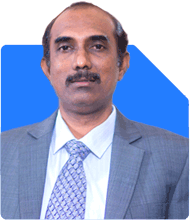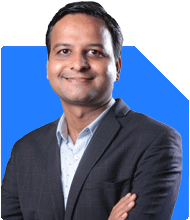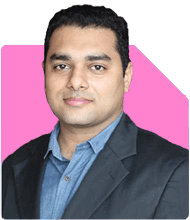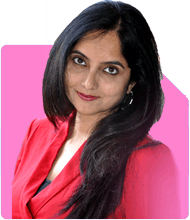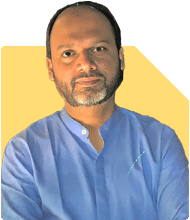Should I invest in a high-risk single mutual fund with a 19% CAGR expectation for 15 years?
Ramalingam Kalirajan |10870 Answers |Ask -Follow
Mutual Funds, Financial Planning Expert - Answered on Oct 15, 2024
He has an MBA in finance from the University of Madras and is a certified financial planner.
He is the director and chief financial planner at Holistic Investment, a Chennai-based firm that offers financial planning and wealth management advice.... more

Respected Sir, I want to invest in single mutual fund, kindly review. Benchmark index- Nifty midcap 150 momentum 50 index Time horizon - 15 years SIP- 26000 Return expected - 19% CAGR Risk - very high Targeted amount- 2 cr
Your target is to achieve Rs 2 crore in 15 years with an expected return of 19% CAGR. This aligns with a very high-risk profile, particularly as you are considering the Nifty Midcap 150 Momentum 50 Index as a benchmark.
Let’s analyze this investment plan in detail.
Understanding the Investment Objective
Before proceeding, it's crucial to clearly define your investment objectives.
Target Amount: Rs 2 crore in 15 years.
Expected Return: 19% CAGR, which is ambitious but achievable in mid-cap funds.
Risk Profile: Very high risk, suitable for aggressive investors.
It’s important to remain focused on these objectives as you make your investment decisions.
Benefits of Actively Managed Funds
While the benchmark index you mentioned is the Nifty Midcap 150 Momentum 50, consider opting for actively managed mutual funds.
Actively managed funds can outperform their benchmarks over time.
Fund managers adjust portfolios based on market conditions, maximizing returns.
They often focus on high-quality mid-cap stocks, which can deliver superior growth.
Index funds may have lower costs, but they do not provide the same flexibility and active management benefits. Investing in an actively managed fund through a Certified Financial Planner (CFP) offers you personalized guidance and support.
Assessing the SIP Amount
Your SIP of Rs 26,000 is a strong starting point.
Over 15 years, this could lead to substantial wealth accumulation.
This regular investment will also help mitigate market volatility through rupee cost averaging.
It’s wise to review your cash flow to ensure consistent contributions.
Ensure that you have a buffer for emergencies while committing this amount.
Evaluating the 19% Expected Return
A 19% CAGR is ambitious but not impossible for mid-cap investments.
Historically, mid-cap funds have outperformed large-cap funds during bullish markets.
However, they can also be more volatile during downturns.
Understanding market trends and economic conditions is crucial for achieving this target.
Risk Considerations
Your choice of a very high-risk profile requires careful consideration.
Be prepared for market fluctuations and potential short-term losses.
Ensure you have a solid financial foundation outside of this investment.
Consider diversifying your investment approach to balance risk.
Tax Implications of Mutual Fund Investments
Understanding the tax implications is essential when investing in mutual funds.
Long-term capital gains (LTCG) above Rs 1.25 lakh are taxed at 12.5%.
Short-term capital gains (STCG) are taxed at 20%.
For debt mutual funds, LTCG and STCG are taxed according to your income tax slab.
These tax implications can significantly affect your overall returns.
Reviewing Investment Strategies
As a single fund investor, review your strategies regularly.
Monitor your investment's performance against the benchmark.
Be ready to adjust your investment if it underperforms over time.
Working with a Certified Financial Planner can help you make informed decisions.
Importance of Regular Reviews
Investment performance can change based on market conditions.
Conduct periodic reviews of your mutual fund.
Reassess your investment strategy at least once a year.
This ensures that you are on track to meet your financial goals.
Risk Management Strategies
Having a robust risk management strategy is essential for high-risk investments.
Diversification is key. While you may want a single fund, consider a few others to spread risk.
Always maintain a cash reserve to manage short-term financial needs.
This way, you won't be forced to withdraw from your investment during a market dip.
Staying Informed About Market Conditions
Keeping yourself informed about market trends and economic conditions is essential.
Follow news related to the stock market and economic policies.
Stay updated on changes in fund management and portfolio adjustments.
Knowledge will empower you to make timely and informed investment decisions.
Role of a Certified Financial Planner
Engaging with a Certified Financial Planner can enhance your investment strategy.
A CFP will provide tailored advice based on your financial situation.
They can help you understand the intricacies of your chosen fund.
This professional guidance is especially valuable in managing risk and optimizing returns.
Setting Realistic Expectations
While aiming for high returns is good, set realistic expectations.
Understand that market conditions can affect returns.
Be flexible with your goals and timelines if necessary.
Remember, consistent investments often yield better long-term results.
Final Insights
Investing in a single mutual fund is a good strategy if you do thorough research.
Aim for actively managed funds to maximize returns.
Regularly assess your investments and adjust as needed.
Stay informed and consult a Certified Financial Planner for personalized advice.
Your commitment to investing is admirable. With disciplined saving and a well-thought-out strategy, reaching your goal of Rs 2 crore in 15 years is achievable.
Best Regards,
K. Ramalingam, MBA, CFP,
Chief Financial Planner,
www.holisticinvestment.in
https://www.youtube.com/@HolisticInvestment
You may like to see similar questions and answers below
Ramalingam Kalirajan |10870 Answers |Ask -Follow
Mutual Funds, Financial Planning Expert - Answered on May 17, 2024
Ramalingam Kalirajan |10870 Answers |Ask -Follow
Mutual Funds, Financial Planning Expert - Answered on May 19, 2024
Ramalingam Kalirajan |10870 Answers |Ask -Follow
Mutual Funds, Financial Planning Expert - Answered on Oct 24, 2024
Ramalingam Kalirajan |10870 Answers |Ask -Follow
Mutual Funds, Financial Planning Expert - Answered on Jan 02, 2025
Ramalingam Kalirajan |10870 Answers |Ask -Follow
Mutual Funds, Financial Planning Expert - Answered on Feb 11, 2025
Ramalingam Kalirajan |10870 Answers |Ask -Follow
Mutual Funds, Financial Planning Expert - Answered on Feb 11, 2025
Dr Shyam Jamalabad |107 Answers |Ask -Follow
Dentist - Answered on Dec 05, 2025
Dr Shyam Jamalabad |107 Answers |Ask -Follow
Dentist - Answered on Dec 05, 2025
Dr Dipankar Dutta |1836 Answers |Ask -Follow
Tech Careers and Skill Development Expert - Answered on Dec 05, 2025
Ulhas Joshi |280 Answers |Ask -Follow
Mutual Fund Expert - Answered on Dec 05, 2025
Dr Dipankar Dutta |1836 Answers |Ask -Follow
Tech Careers and Skill Development Expert - Answered on Dec 04, 2025
Ravi Mittal |676 Answers |Ask -Follow
Dating, Relationships Expert - Answered on Dec 04, 2025
Anu Krishna |1745 Answers |Ask -Follow
Relationships Expert, Mind Coach - Answered on Dec 04, 2025
Anu Krishna |1745 Answers |Ask -Follow
Relationships Expert, Mind Coach - Answered on Dec 04, 2025
Mayank Chandel |2562 Answers |Ask -Follow
IIT-JEE, NEET-UG, SAT, CLAT, CA, CS Exam Expert - Answered on Dec 04, 2025
Mayank Chandel |2562 Answers |Ask -Follow
IIT-JEE, NEET-UG, SAT, CLAT, CA, CS Exam Expert - Answered on Dec 04, 2025





